Flying Scotsman: Famous engine back on tracks
- Published
Flying Scotsman takes a public test-run under steam after ten years off the tracks
One of the world's most famous railway locomotives, Flying Scotsman, has taken its first public test-run under steam after a decade off the tracks.
The engine, which was retired from service in 1963, has been restored for York's National Railway Museum (NRM) in a shed in Bury, Greater Manchester.
Low-speed tests have started along the East Lancashire Railway (ELR).
Andrew McLean, NRM head curator, said: "From the dead it becomes something living and breathing again."
The first test-run saw it move out of its shed and travel a short distance down the track to the heritage line's Bolton Street station.
It marks the end of a £4.2m restoration project, which began in 2006, by Riley and Son Ltd, based in Bury.
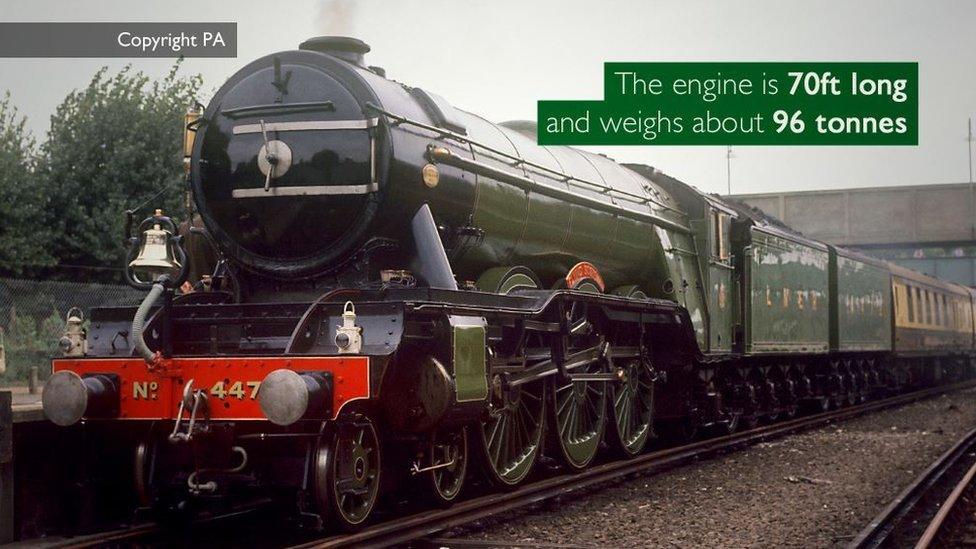
Open days are being held at the heritage line, external over the next two weekends ahead of a mainline test from Manchester to Carlisle over the Ribblehead viaduct on 23 January.
It will be repainted in its traditional green livery on 10 February for its journey from London's King's Cross to York two weeks later.
Public services will begin in late February, alongside an exhibition at the museum.

Flying Scotsman in popular culture
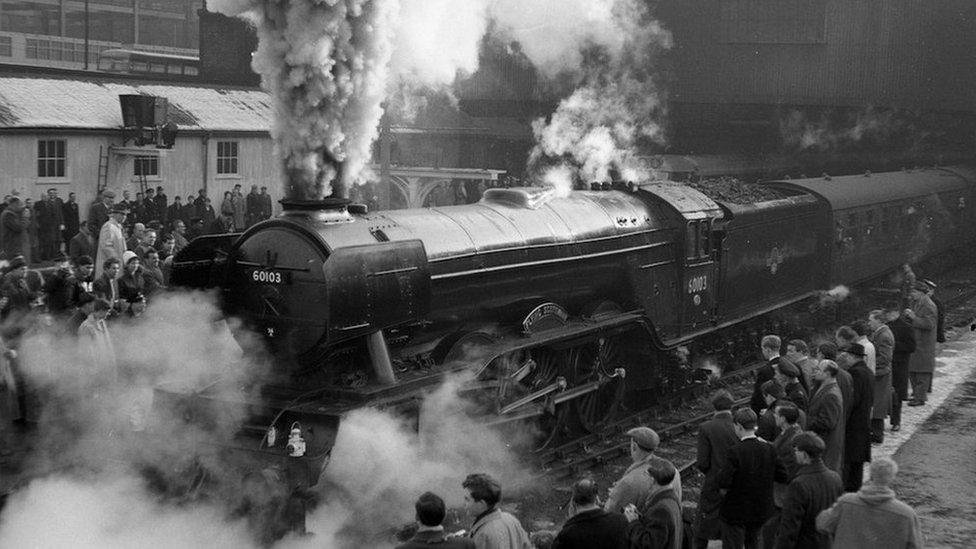
Flying Scotsman symbolised the age of high-class rail travel with on-board luxuries including a ladies' retiring room, a hairdressing salon and a "travelling newsman" from WH Smith with the latest papers
It featured in the The Flying Scotsman, a 1929 film which symbolised a benchmark in British filmmaking
The locomotive has a place in The Railway Series of children's books by Reverend Wilbert Vere Awdry
It appeared in the 102 Dalmatians film, pulling the Orient Express out of London
One of the specially-produced £5 coins for the 2012 Summer Olympics featured an engraving of Flying Scotsman on the back

Noel Hartley, who will be driving Flying Scotsman for a dining event, said although it was "just another day at the office", being in charge of the locomotive was a "huge honour".
The engine, designed by Sir Nigel Gresley, was built by the London and North Eastern Railway (LNER) at Doncaster Works in 1923, at a cost of £7,944.

It gained celebrity status after debuting at the British Empire Exhibition in Wembley in 1924 - a huge spectacle, showcasing goods and produce from the Empire countries, which attracted millions of visitors.
Its fame grew in 1928 when it hauled a non-stop service from London to Edinburgh, a huge engineering feat of the time and one that sparked international interest.
In 1934 it earned a place in the record books as the first steam locomotive to achieve an authenticated 100mph run.
However, some claim City of Truro was the first steam engine to break the 100mph record in 1904 when it apparently reached a speed of 102mph running down a slope near Somerset.
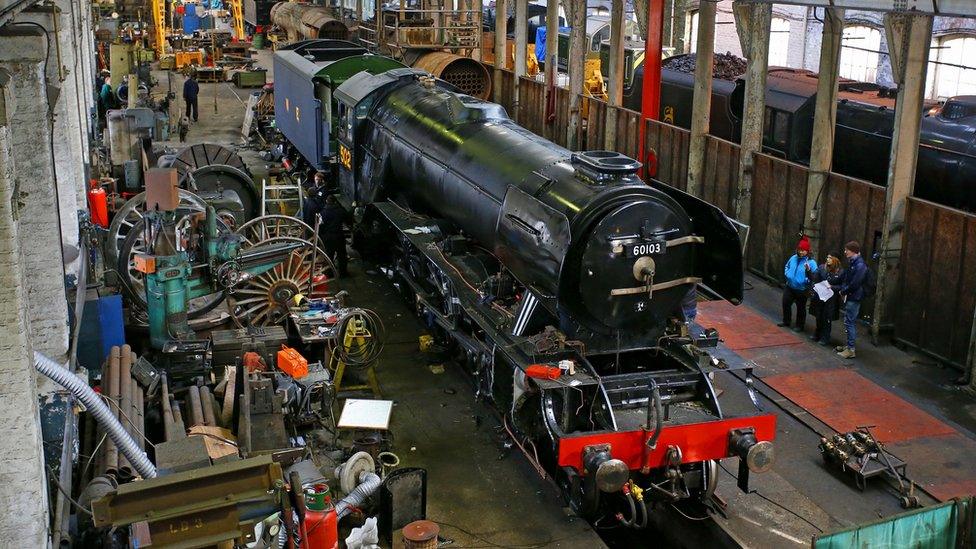
Modern equipment fitted to the engine to comply with railway standards is hidden behind panelling or in boxes
After being bought and restored by businessman Alan Pegler in 1963, the engine toured the US and Australia.
The Scotsman was bought for the nation in 2004 using £415,000 in public donations, a £365,000 gift from Sir Richard Branson and a £1.8m grant from the National Heritage Memorial Fund.
It marks the end of a complex restoration project, which began in 2006 by specialist engineers based in Bury
Mike Kelly, chairman of ELR, said: "If you think about iconic, great British creations, Flying Scotsman is up there. It is a national treasure.
"People have been starved for many years of being able to see this beautiful machine in action; I'm sure there will be some emotional scenes when it's running again."
- Published8 January 2016
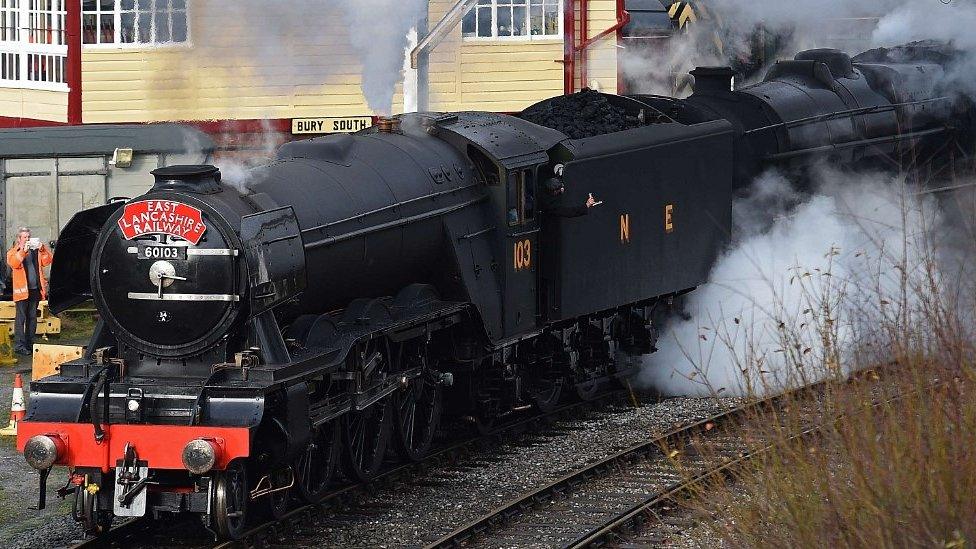
- Published11 December 2015
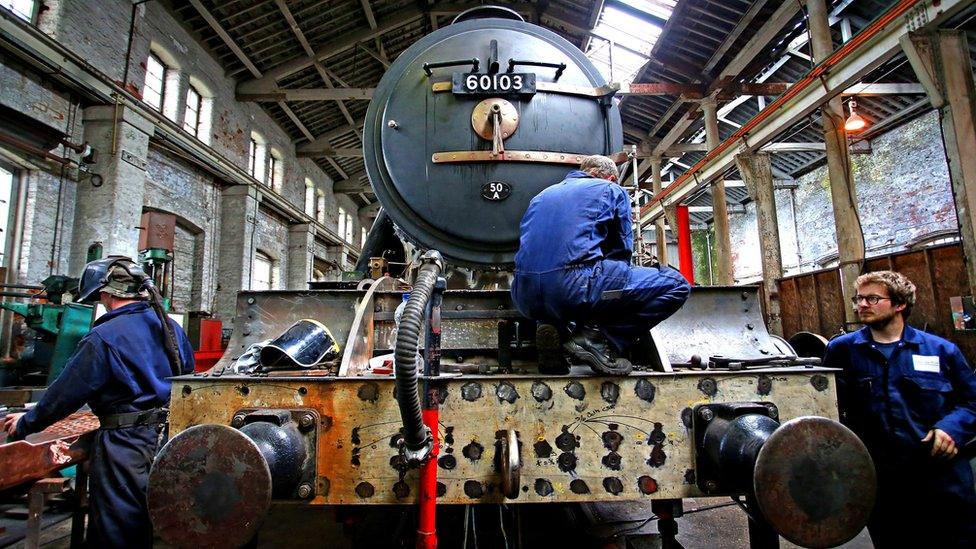
- Published28 May 2011